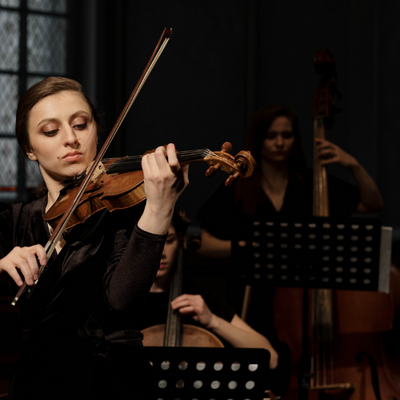The world of string instruments is rich and varied, each instrument offering its own unique sound and playing experience. For those new to these instruments or considering which to learn, understanding the differences between the violin, viola, cello, and double bass is essential. This guide aims to provide a detailed comparison, helping you appreciate the distinct characteristics of each.
Violin

The violin is the smallest and highest-pitched member of the string family. It typically features four strings tuned in perfect fifths: G, D, A, and E. Its size and high pitch make it the most agile of the string instruments, capable of producing bright and expressive melodies. The violin is a mainstay in orchestras, chamber music, and as a solo instrument. Its repertoire spans from Baroque to contemporary music, making it a versatile choice for both beginners and advanced players. We offer a wide selection of high-quality violins such as the Eurostring selection suitable for students, and the Antonin Dvorak collection for professionals.
Viola

Slightly larger than the violin, the viola has a deeper and richer sound. It also has four strings, but they are tuned a fifth lower: C, G, D, and A. The viola's size and tuning give it a mellower tone, often described as warm and full. While it may not have as extensive a solo repertoire as the violin, the viola plays a crucial role in orchestral and chamber music, providing harmonic support and adding depth to the ensemble. The differences between violin and viola are subtle yet significant, particularly in the tonal quality and role within a group setting. We provide a range of violas that cater to various skill levels, ensuring each player finds their perfect match.
Cello

The cello, much larger than both the violin and viola, is tuned an octave lower than the viola: C, G, D, and A. Its size allows for a much broader range of tones, from deep, resonant lows to lyrical, singing highs. The cello is played while seated, with the instrument resting on the floor supported by an endpin. It is highly valued for its rich, expressive sound and versatility, often featured both as a solo instrument and within ensembles. The cello's role in orchestral music is pivotal, bridging the gap between the higher-pitched violins and violas and the lower double bass. We offer a diverse collection of cellos, such as Lothar Semmlinger cellos, perfect for enhancing any musical setting.
Double Bass

The largest and lowest-pitched member of the string family, the double bass, is an essential foundation in orchestral and jazz music. It is typically tuned in fourths: E, A, D, and G. The double bass produces a deep, resonant sound that underpins the harmonic structure of the music. Due to its size, the double bass is played standing up or seated on a high stool, with the instrument leaning against the player. Its large, resonant body allows for a powerful projection, making it indispensable in both classical and contemporary music settings. We stock a variety of double basses, including the Eurostring collection, designed to meet the needs of both beginners and seasoned performers.
Choosing the Right Instrument
When deciding between these instruments, consider the following factors:
Size and Comfort: The physical size of the instrument is an important consideration. The violin and viola are more portable and easier to manage for younger or smaller players. The cello and double bass require more physical strength and space to play comfortably.
Sound and Role: Think about the type of sound you are drawn to and the role you wish to play in an ensemble. The violin's bright, agile tone contrasts with the viola's warm, rich sound, the cello's expressive range, and the double bass's deep foundation.
Repertoire and Opportunities: Each instrument offers different opportunities in terms of repertoire and performance. Violins often take the lead in orchestras and solo performances, while violas add harmonic depth. Cellos offer a balance of melody and harmony, and double basses provide the rhythmic and harmonic foundation in many genres.
Conclusion
Understanding the differences between the violin, viola, cello, and double bass helps in making an informed choice about which instrument to pursue. Each has its own unique charm and role within the music world, contributing to the rich tapestry of sound that defines string ensembles. Whether you are a student, a school music department, or an aspiring musician, selecting the right instrument is the first step towards a rewarding musical journey. We are here to support you with an extensive range of string instruments and accessories tailored to your needs.





















